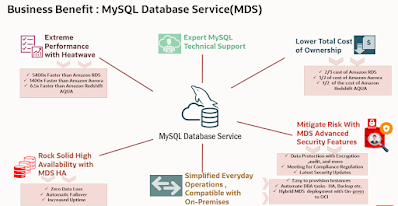
Hey Fellow Developers!
Let’s talk about a powerhouse in the database world: MySQL. Whether you’re building a small personal project or a large enterprise application, MySQL can be your go-to solution for managing data efficiently. So, grab your favorite non-alcoholic drink (because alcohol isn't great for coding and might remind you of your ex), get comfy, and let’s dive into what MySQL is all about and how it can supercharge your development process!
What is MySQL?
MySQL is an open-source relational database management system (RDBMS) that uses Structured Query Language (SQL) for accessing and managing data. It’s known for its reliability, robustness, and ease of use, making it one of the most popular databases in the world. Here’s a quick overview of its key features:
Performance: High-speed performance for both read and write operations.
Scalability: Scales effortlessly from small applications to large databases with millions of records.
Security: Strong data protection with encryption, authentication, and authorization features.
Community and Support: Extensive documentation, active community, and commercial support options.

Getting Started with MySQL
Setting up and using MySQL is straightforward. Here’s a quick guide to get you started:
1)Install MySQL:
You can download and install MySQL from the official website.
Follow the installation instructions specific to your operating system.
2)Set Up MySQL Server:
After installation, start the MySQL server.
Secure your installation by setting a root password and removing anonymous users and test databases using:
mysql_secure_installation
3)Access MySQL:
mysql -u root -p
4)Create a Database and Table:
CREATE DATABASE my_database;
USE my_database;
CREATE TABLE users ( id INT AUTO_INCREMENT PRIMARY KEY, name VARCHAR(100), email VARCHAR(100) );
5)Insert Data:
INSERT INTO users (name, email) VALUES ('Shafayet Hossain', 'shafayeat.me@example.com');
6)Query Data:
SELECT * FROM users;
MySQL vs. SQL: What's the Difference?
While MySQL and SQL are closely related, they’re not the same thing. Here’s a quick breakdown of the differences:
SQL(Structured Query Language)-
What it is: A standardized language used for querying and managing relational databases.
Purpose: Provides a way to communicate with and manipulate databases.
Use Cases: SQL commands like SELECT, INSERT, UPDATE, and DELETE are used across various database systems.
Why You'll Love MySQL
MySQL offers a balance of power and simplicity, making it a favorite among developers. Here’s why you’ll love it:
User-Friendly: Easy to set up and use, with plenty of tutorials and resources available.
Flexibility: Supports a wide range of applications from web development to data warehousing.
Reliability: Proven track record of stability and reliability in production environments.
Open Source: Free to use and modify, with a vibrant community contributing to its continuous improvement.
Final Thoughts
MySQL is a versatile and powerful database solution that can handle a variety of data management needs. Whether you’re just starting out or looking to optimize your existing database setup, MySQL has the tools and features to help you succeed. Dive in, experiment, and see how MySQL can enhance your development projects.
Go ahead and share your MySQL thoughts or ask away, 'cause we totally value your input!
The above is the detailed content of All about MySQL. For more information, please follow other related articles on the PHP Chinese website!




